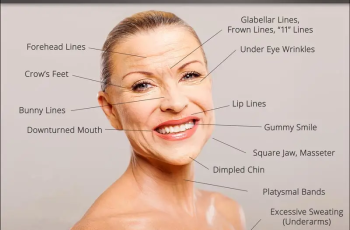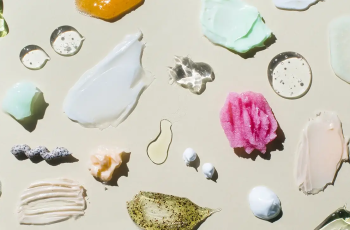
.webp)
.webp)
.webp)
What Is My Skin Type? A Beginner’s Guide to the 4 Most Common Types
.webp)
.webp)
Understanding your skin type is the first step in building the right skincare routine.Just like choosing coffee—size, milk, strength—figuring out your skin needs some testing too.
.webp)
.webp)
.webp)
Think about how your skin feels after cleansing. Is it tight, greasy, or a mix of both? Does it change depending on the season or the products you use?
.webp)
.webp)
Skin type isn’t about how many breakouts you get—it’s about how your skin behaves on a daily basis. Let’s explore the four most common skin types: Oily, Dry, Combination, and Sensitive.
.webp)
.webp)
.webp)
Oily Skin Type
.webp)
.webp)
Oily skin produces too much sebum, the oil made by your glands to keep your skin protected. This oil is helpful in many ways but can also lead to clogged pores and breakouts.
.webp)
.webp)
.webp)
How to Tell If You Have Oily Skin
.webp)
.webp)
Here are the key signs of oily skin:
.webp)
.webp)
.webp)
Your face looks shiny or greasy, especially in the T-zone. You rarely feel dry or tight, even after cleansing. Pores are large and visible, especially on the forehead and nose.
.webp)
.webp)
You’re prone to acne, blackheads, and breakouts. Makeup slides off easily or doesn’t stay put. Skin still feels hydrated without using moisturizer.
.webp)
.webp)
.webp)
Simple Test for Oily Skin
.webp)
.webp)
Wash your face with a gentle cleanser and wait an hour. Press your finger to your forehead. Rub it against your thumb—do you feel oil? If you see or feel grease, your skin is likely oily.
.webp)
.webp)
.webp)
Benefits of Oily Skin
.webp)
.webp)
You may notice fewer signs of aging like wrinkles. Natural oils help keep skin looking plump and youthful longer.Healing from cuts or blemishes may be faster.
.webp)
.webp)
.webp)
Common Myths About Oily Skin
.webp)
.webp)
Myth: You don’t need moisturizer.
.webp)
.webp)
.webp)
Truth: Lightweight moisturizers help keep skin balanced.
.webp)
.webp)
Myth: Face oils make it worse.
.webp)
.webp)
.webp)
Truth: Some oils like squalane or jojoba can calm the skin.
.webp)
.webp)
Myth: You should use harsh cleansers.
.webp)
.webp)
.webp)
Truth: Stripping skin can trigger even more oil production.
.webp)
.webp)
Best Ingredients for Oily Skin
.webp)
.webp)
.webp)
Salicylic acid (BHA): Unclogs pores and prevents acne.
.webp)
.webp)
Glycolic & lactic acids (AHAs): Remove dead skin gently.
.webp)
.webp)
.webp)
Niacinamide: Balances oil and reduces redness.
.webp)
.webp)
Clay masks: Help absorb excess oil.
.webp)
.webp)
.webp)
Ingredients to Avoid
.webp)
.webp)
Heavy oils like cocoa butter or mineral oil.Thick creams or emollients made for dry skin. Alcohol-based toners that strip the skin.
.webp)
.webp)
.webp)
Dry Skin Type
.webp)
.webp)
Dry skin doesn’t produce enough oil, leaving it tight, flaky, or rough. This skin type needs more moisture to stay comfortable and smooth.
.webp)
.webp)
.webp)
Signs You Have Dry Skin
.webp)
Your skin feels tight or itchy after washing. Moisturizer is a must, especially after showers. Skin often looks dull, with visible flaking. Wrinkles or fine lines show up earlier.
Your skin gets worse in cold weather. Red or irritated patches may appear from time to time.
Dry Skin Test
Cleanse your face and wait an hour. If it feels tight, rough, or uncomfortable, and you see no oil at all—your skin is likely dry.
Why Dry Skin Happens
Genetics
Harsh weather, especially cold and wind
Aging (skin makes less oil over time)
Over-cleansing or using drying products
Health conditions like eczema
Best Ingredients for Dry Skin
Hyaluronic acid: Draws water into the skin. Glycerin: Hydrates and protects the skin barrier.
Ceramides: Help lock in moisture. Shea butter and natural oils: Nourish and repair dry patches.
Lactic acid: Gently exfoliates and hydrates.
Tips for Managing Dry Skin
Avoid long, hot showers—they dry out the skin. Use creamy, gentle cleansers instead of foaming ones. Apply moisturizer while skin is still damp. Use a humidifier during dry months.
Choose thick creams at night to repair while you sleep.
Combination Skin Type
Combination skin has both oily and dry areas. Usually, the T-zone (forehead, nose, and chin) is oily, while the cheeks are dry or normal.
This is one of the most common skin types. How to Tell If You Have Combination Skin
Oily T-zone but dry or tight cheeks. Breakouts mainly on the forehead or chin. Makeup slides off some areas but clings to others. Pores are visible in some spots but not all.
Your skin’s condition changes with the seasons.
Why It’s Tricky to Treat
Using products for oily skin might dry out your cheeks. Using rich creams for dryness can clog pores in your oily zone. You have to treat different areas of the face with different care.
Best Ingredients for Combination Skin
Hyaluronic acid: Hydrates dry skin without making oily areas worse.
Niacinamide: Balances oil and soothes dryness.
Gel moisturizers: Hydrate without heaviness.
Gentle exfoliants: Keep skin clear without over-drying.
Tips for Managing Combo Skin
Use oil-free moisturizers on the T-zone.
Apply richer creams only to dry areas like cheeks.
Multi-mask: Clay mask for oily areas, cream mask for dry ones.
Avoid harsh cleansers that dry out your skin.
Sensitive Skin Type
Sensitive skin reacts easily to products, weather, or even water.
It can sting, burn, itch, or turn red with little warning.
Sensitive skin is more of a condition than a type—it can affect oily, dry, or combo skin.
Signs You Have Sensitive Skin
Skin stings or burns when trying new products. Redness or irritation appears often. You flush easily or feel hot after washing. Your skin gets itchy or inflamed easily. You burn quickly in the sun.
Common Triggers
Fragrances and dyes in products
Alcohol or harsh exfoliants
Extreme weather (cold, heat, wind)
Stress or lack of sleep
Over-washing or using too many actives
How to Care for Sensitive Skin
Always patch test new products first. Choose fragrance-free and hypoallergenic formulas. Use calming ingredients like aloe vera, centella asiatica, or colloidal oatmeal.
Stick to simple routines with fewer steps. Avoid scrubbing or harsh exfoliants.
Tip: Sensitive skin often benefits from products made for babies or medically tested skincare lines.
What About Dehydrated Skin?
Dehydrated skin is not the same as dry skin. Dry skin lacks oil. Dehydrated skin lacks water. Any skin type—even oily—can become dehydrated.
Signs of Dehydrated Skin
Skin looks dull or tired. Fine lines appear more noticeable. Skin feels tight or rough, even if oily. It may feel both oily and dry at once.
How to Fix It
Use hydrating serums with hyaluronic acid or glycerin. Drink enough water throughout the day. Avoid caffeine or alcohol—they dry you out. Use barrier-repair creams to seal in moisture.
Final Thoughts: Understanding Your Skin = Better Skin
Your skin type is your skin’s natural state. It’s shaped by genetics, environment, age, and hormones. Knowing your type helps you pick the best products for your face.
It also helps you avoid mistakes—like over-drying oily skin or clogging pores with thick creams. Once you understand your skin, you’ll see better results, fewer breakouts, and a more radiant glow.
Remember: your skin type can change over time. Keep checking in with it and adjust your routine when needed.

